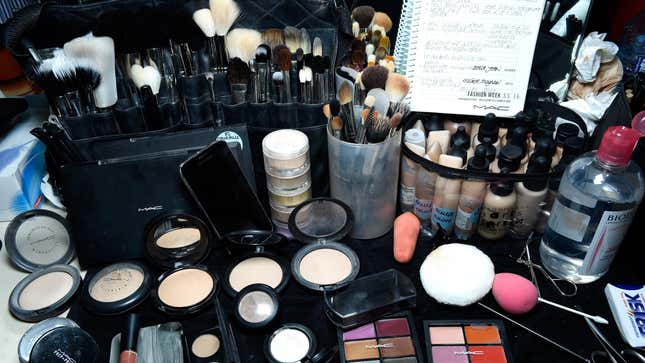Potentially Harmful Chemicals in Lipstick & Mascara Could Soon Be Regulated by Congress
Proposed legislation was prompted by a study that found high levels of a marker for PFAS in over half of the cosmetics products tested
CongressPolitics

On Tuesday, the Senate and House of Representatives introduced a bill that if passed, would ban the man-made and reportedly toxic chemicals called PFAS from being included in makeup products. This legislation comes after a new study looking at the U.S. and Canada found high levels of a chemical marker for PFAS in 52 percent of the 231 makeup products tested. Some of the cosmetic products with the highest levels of PFAS were foundations, waterproof mascaras, and long-lasting lipsticks.
The new study used the chemical fluorine as a marker to identify the presence of PFAS in the 231 cosmetic products that were tested, and samples from the 29 products with the highest levels of fluorine were sent to an outside lab for further analysis. In 28 of the 29 products where specific PFAS chemicals were found, those chemicals were not disclosed on the item’s label. “Some of it could be unintentional, due to manufacturing issues, but there are several products where the levels are so large, they had to be intentionally added for something like durability or water resistance, because that’s what PFAS do very well,” explained Graham Peaslee, a professor of physics, chemistry, and biochemistry, and an author on the study in question.
-

-

-

-

-

-

-

-

-

-

-

-

-

-

-

-

-

-

-

-

-

-

-

-

-

-

-

-

-

-

-

-

-

-

-

-

-

-

-

-








































